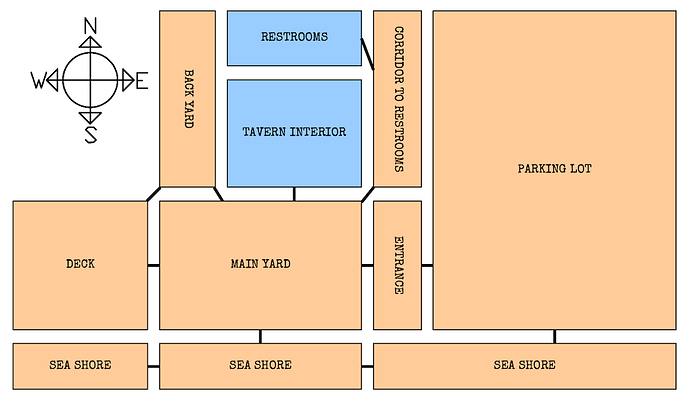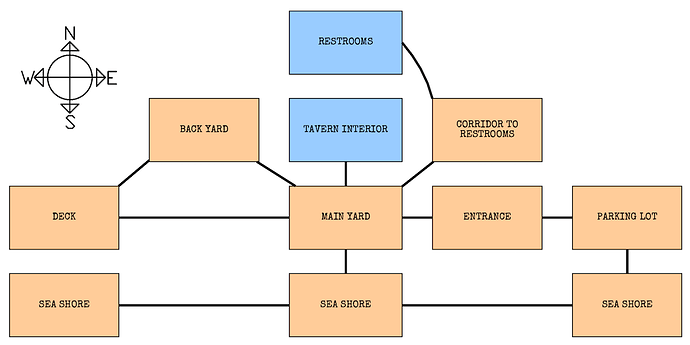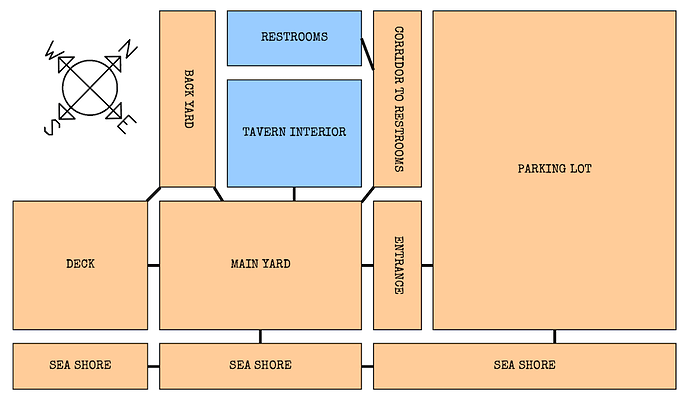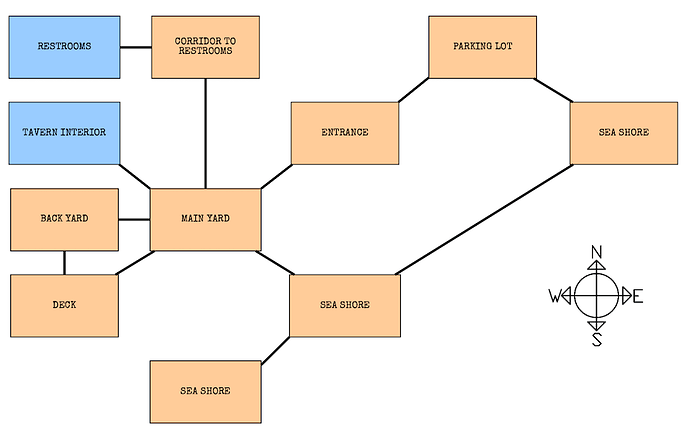It may be an artifact of Adventure, but I do think the reason it sticks around is because it works.
If I were in an unfamiliar building in real life, I’d probably get directions like “turn right, fourth door on the left, up the stairs, then turn right again”. I could follow that easily, and reverse it without any active thought.
But that reversal, for me at least, depends on a lot of deeply-ingrained instincts that don’t work in a text-based game—or even a graphical game that doesn’t give me full, FPS-style navigational control. It would take me at least a few seconds of actively thinking about it to turn that into “turn left, down the stairs, fourth door on the right”. If you’re like me, it probably took you a few seconds to realize that’s wrong: it should be turn left, down the stairs, turn right, fourth door on the left.
By comparison, “west, north, west, up, east” reverses trivially to “west, down, east, south, east”. I can visualize the Trizbort-style grid in my head without any issue.
Landmark-based navigation is all well and good, but in my experience, it’s only really intuitive for very linear maps. Let’s suppose I wanted to modify Adventure’s early game: you go downstream, then into the forest, then toward a clearing. How do you get back to the stream now? Maybe I went south along the stream, west into the forest, north into the clearing, so going east should take me back to the end of the road, but I would have no way of knowing those relative directions until I was close enough to see the road and the building again.
Tl;dr I believe compass-based navigation has stuck around, not because nobody’s ever tried an alternative, but because it makes it less taxing for players to navigate and easier for them to build a mental map. In real life we have various biological systems that make it easy to keep our bearings (e.g. it’s trivial to face the direction we entered a room through even if we’ve done other things since then); the convention of using compass directions is a way of replicating that, even if we don’t always use those absolute directions in real life.




 . But you’d have to check that you don’t say something like “your right hand” or else you might be departing from realism again! (There are cultures which use both of course.)
. But you’d have to check that you don’t say something like “your right hand” or else you might be departing from realism again! (There are cultures which use both of course.)